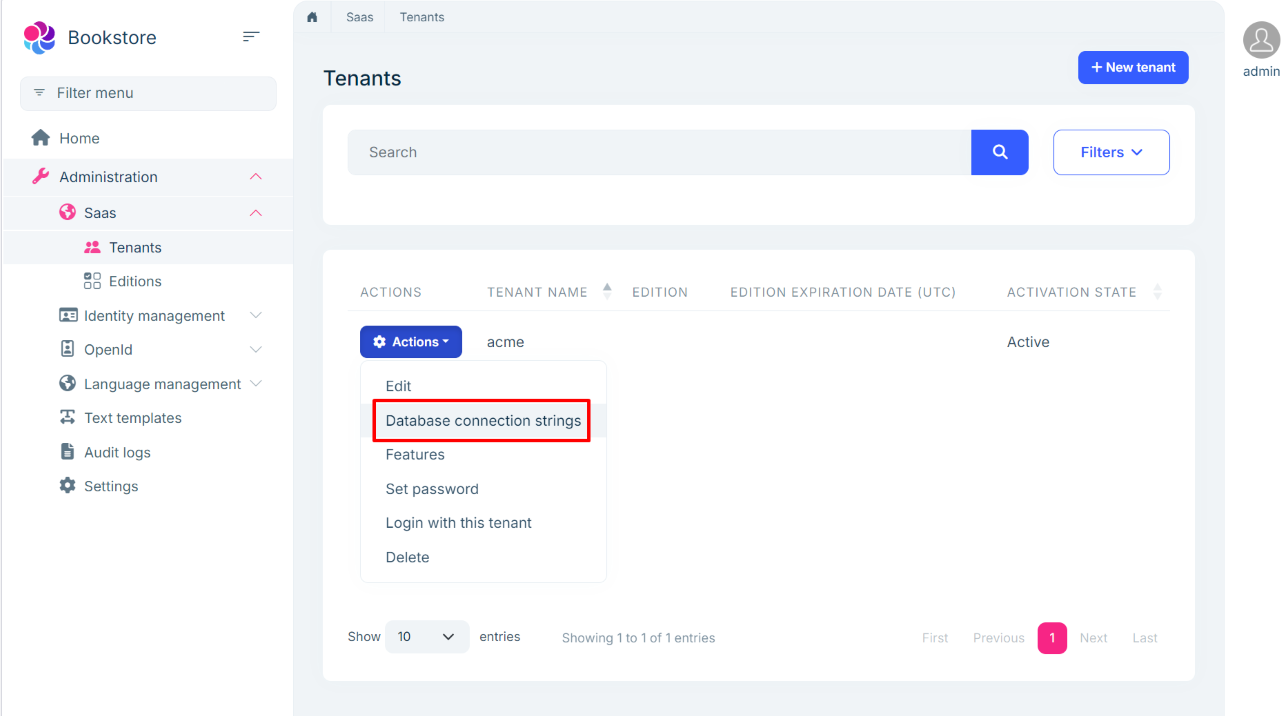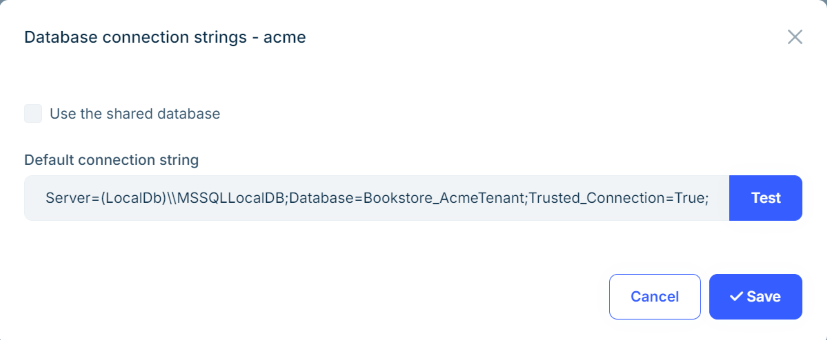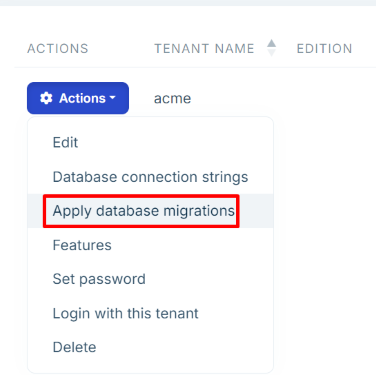Single Layer Solution: Database configurations
Some of the features mentioned in this document may not be available in the free version. We're using the * symbol to indicate that a feature is available in the Team and Higher licenses.
ABP Studio's Single-Layer Solution Template includes pre-configured database settings. This document explains how to manage database configurations in your solution.
Connection String
Connection strings are stored in the appsettings.json file and can be customized for different environments by editing this file. Web Application projects use the Default connection string by default.
To update the connection string for the Default key, modify the appsettings.json file in your project. Connection strings are defined under the ConnectionStrings section, as shown below:
{
"ConnectionStrings": {
"Default": "Server=(LocalDb)\\MSSQLLocalDB;Database=Bookstore;Trusted_Connection=True;TrustServerCertificate=true"
}
}
The DbContext Class
In the Single-Layer Solution Template, the DbContext class is defined in the main project. This class manages the database schema and is derived from the AbpDbContext class, which offers additional features and configurations. You can customize the DbContext class to add new entities, relationships, and configurations. It is located in the Data folder of the main project.
public class BookstoreDbContext : AbpDbContext<BookstoreDbContext>
{
public const string DbTablePrefix = "App";
public const string DbSchema = null;
public BookstoreDbContext(DbContextOptions<BookstoreDbContext> options)
: base(options)
{
}
protected override void OnModelCreating(ModelBuilder builder)
{
base.OnModelCreating(builder);
/* Include modules to your migration db context */
builder.ConfigureSettingManagement();
builder.ConfigureBackgroundJobs();
builder.ConfigureAuditLogging();
builder.ConfigureFeatureManagement();
builder.ConfigurePermissionManagement();
builder.ConfigureBlobStoring();
builder.ConfigureIdentityPro();
builder.ConfigureOpenIddictPro();
builder.ConfigureGdpr();
builder.ConfigureLanguageManagement();
builder.ConfigureSaas();
builder.ConfigureTextTemplateManagement();
/* Configure your own entities here */
}
}
OnModelCreating Method
The OnModelCreating method is used to configure the database schema. It calls the Configure* methods of the ABP Framework to configure the database schema for the modules. You can also configure your own tables/entities inside this method.
protected override void OnModelCreating(ModelBuilder builder)
{
base.OnModelCreating(builder);
builder.ConfigurePermissionManagement();
builder.ConfigureSettingManagement();
builder.ConfigureBackgroundJobs();
builder.ConfigureAuditLogging();
builder.ConfigureFeatureManagement();
builder.ConfigureIdentityPro();
builder.ConfigureOpenIddictPro();
builder.ConfigureLanguageManagement();
builder.ConfigureSaas();
builder.ConfigureTextTemplateManagement();
builder.ConfigureGdpr();
builder.ConfigureCmsKit();
builder.ConfigureCmsKitPro();
builder.ConfigureBlobStoring();
/* Configure your own tables/entities inside here */
//builder.Entity<YourEntity>(b =>
//{
// b.ToTable(DbTablePrefix + "YourEntities", DbSchema);
// b.ConfigureByConvention(); //auto configure for the base class props
// //...
//});
}
The
Configure*methods are extension methods defined in each module'sEntityFrameworkCoreproject. These methods are used to configure the database schema for their respective modules.
Configuration
In the BookstoreModule class, the ConfigureEfCore method is used to configure the database context. It registers the BookstoreDbContext class to the dependency injection system and sets the SQL Server as the default DBMS for the application.
private void ConfigureEfCore(ServiceConfigurationContext context)
{
context.Services.AddAbpDbContext<BookstoreDbContext>(options =>
{
/* You can remove "includeAllEntities: true" to create
* default repositories only for aggregate roots
* Documentatidon: https://docs.abp.io/en/abp/latest/Entity-Framework-Core#add-default-repositories
*/
options.AddDefaultRepositories(includeAllEntities: true);
});
Configure<AbpDbContextOptions>(options =>
{
options.Configure(configurationContext =>
{
configurationContext.UseSqlServer();
});
});
}
The IDesignTimeDbContextFactory Implementation
The IDesignTimeDbContextFactory interface is used to create a DbContext instance at design time. It is used by EF Core tools to create migrations and update the database. The BookstoreDbContextFactory class implements the IDesignTimeDbContextFactory interface to create a BookstoreMigrationsDbContext instance.
public class BookstoreDbContextFactory : IDesignTimeDbContextFactory<BookstoreDbContext>
{
public BookstoreDbContext CreateDbContext(string[] args)
{
BookstoreEfCoreEntityExtensionMappings.Configure();
var configuration = BuildConfiguration();
var builder = new DbContextOptionsBuilder<BookstoreDbContext>()
.UseSqlServer(configuration.GetConnectionString("Default"));
return new BookstoreDbContext(builder.Options);
}
private static IConfigurationRoot BuildConfiguration()
{
var builder = new ConfigurationBuilder()
.SetBasePath(Directory.GetCurrentDirectory())
.AddJsonFile("appsettings.json", optional: false);
return builder.Build();
}
}
SaaS Module: The Tenant Management UI *
SaaS module provides the necessary UI to set and change connection string for tenants and trigger the database migrations.
The Connection String Management Modal
You can click to the Database Connection Strings command in the Actions dropdown button for a tenant in the Tenants page of the SaaS module:

It opens the Database Connection Strings modal as shown below:

Here, we can set a Default connection string for the tenant.
When you make the changes and save the dialog, the database is automatically created and migrated. If you later update the connection string (for example if you change the database name), it will also trigger the database migration process again.
Manually Applying the Database Migrations
If you need to manually trigger the database migrations for a specific tenant, click the Actions dropdown for the related tenant and select the Apply Database Migrations command on the Tenant Management page of the SaaS module:



























































